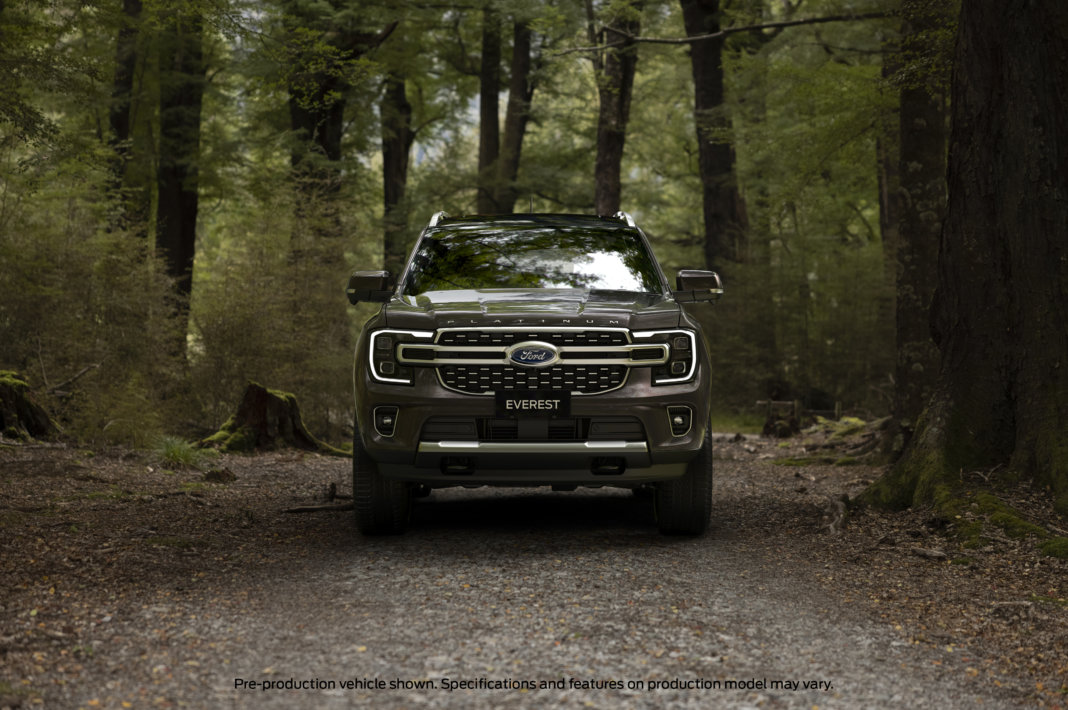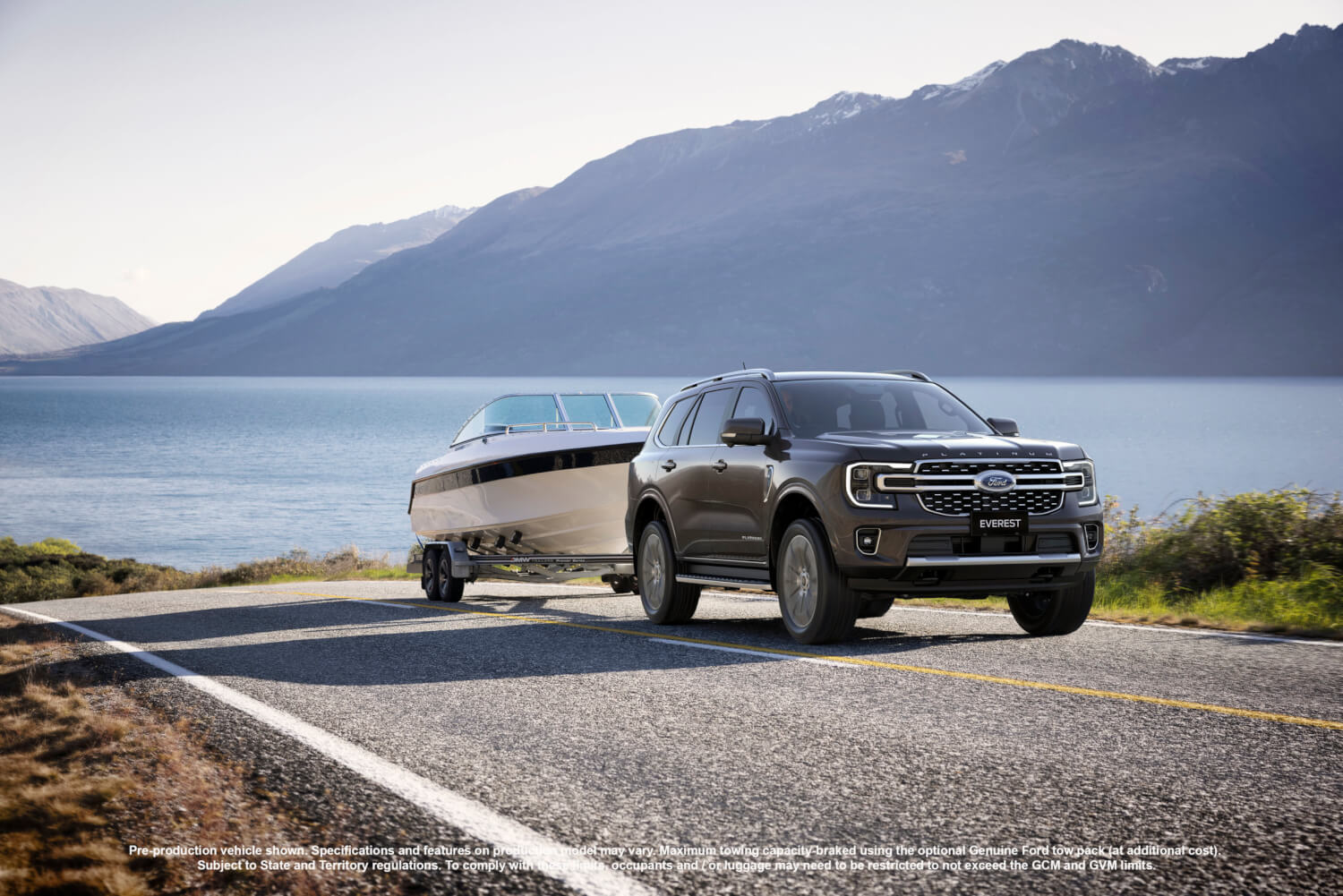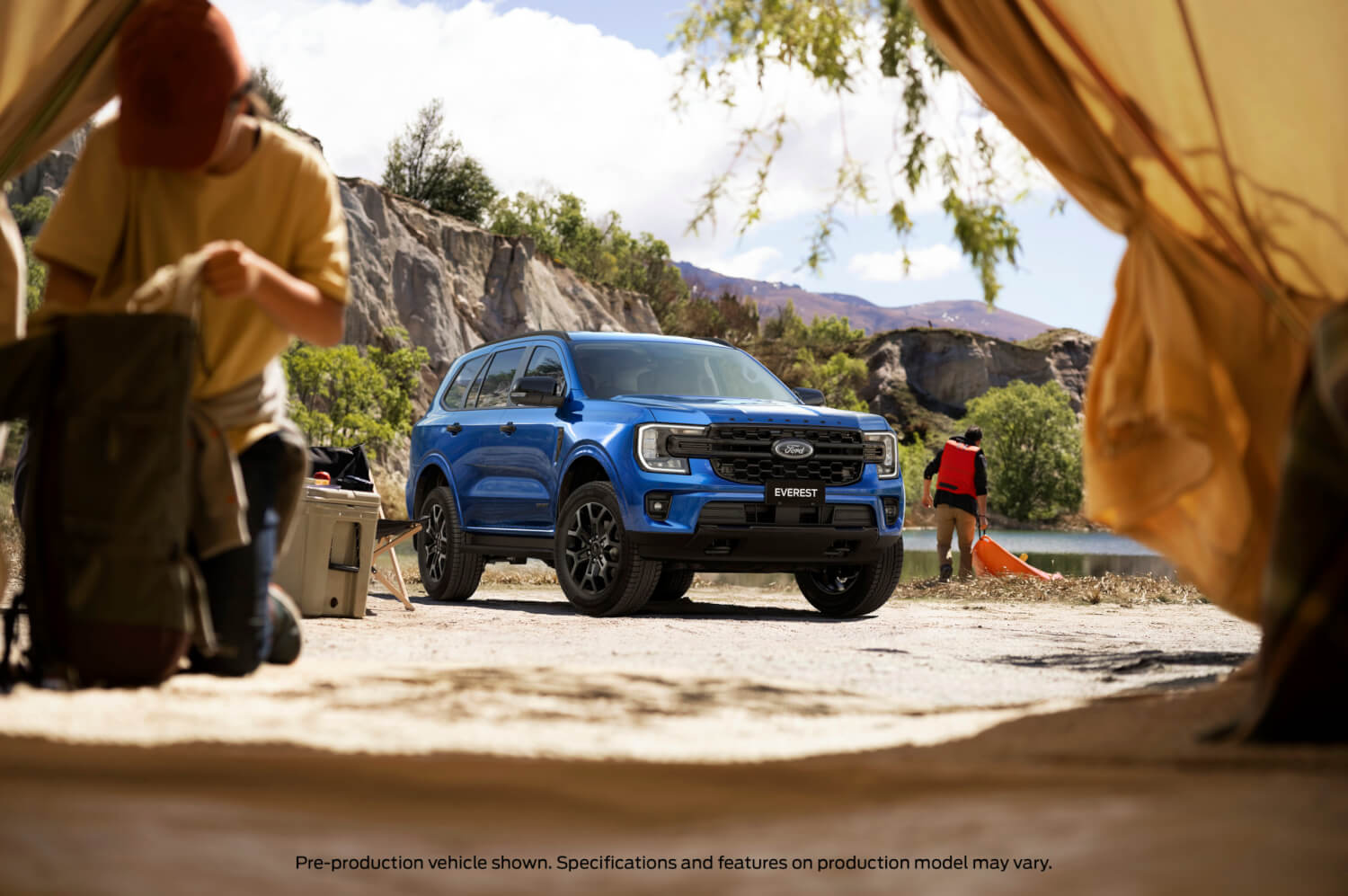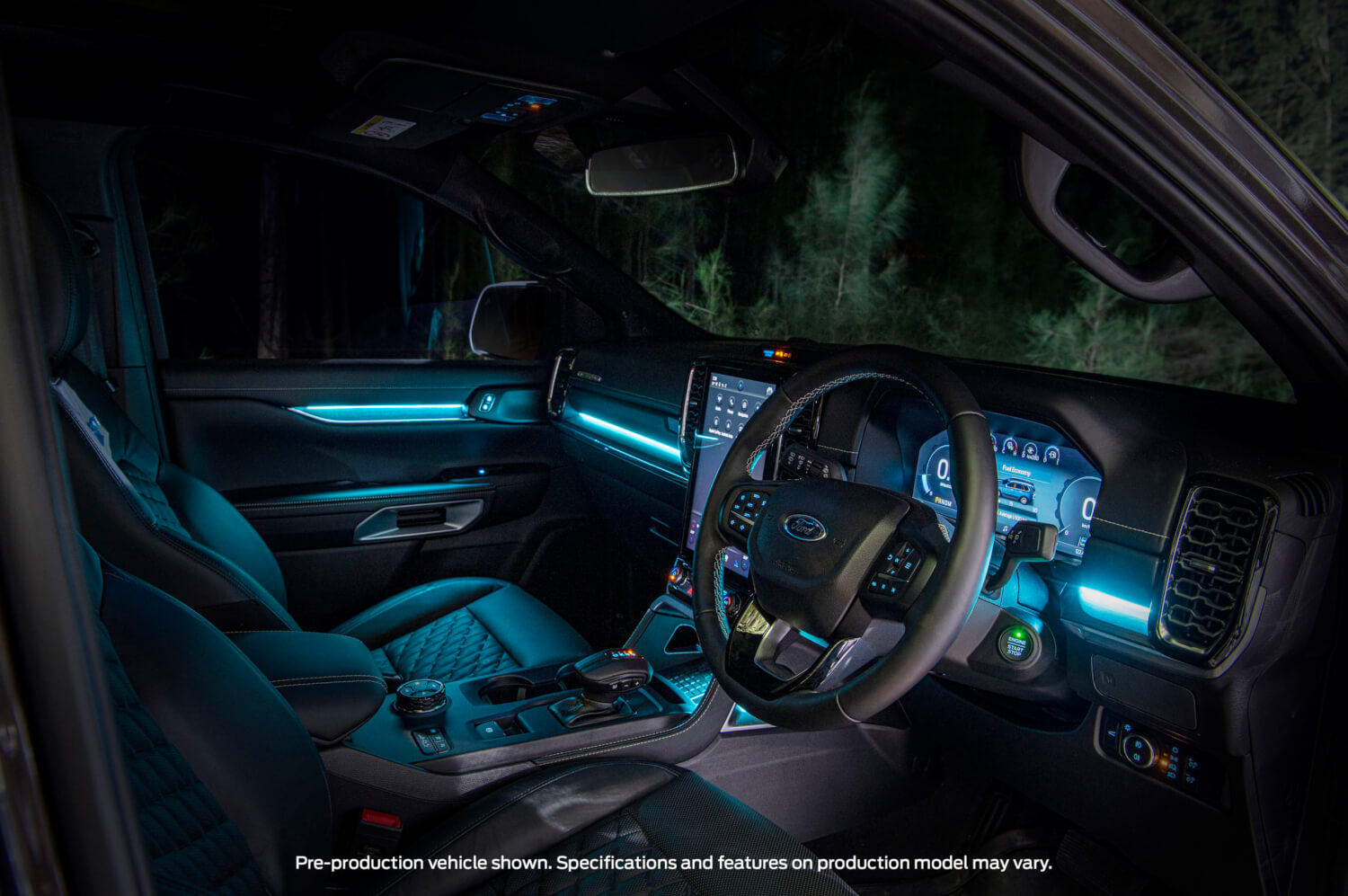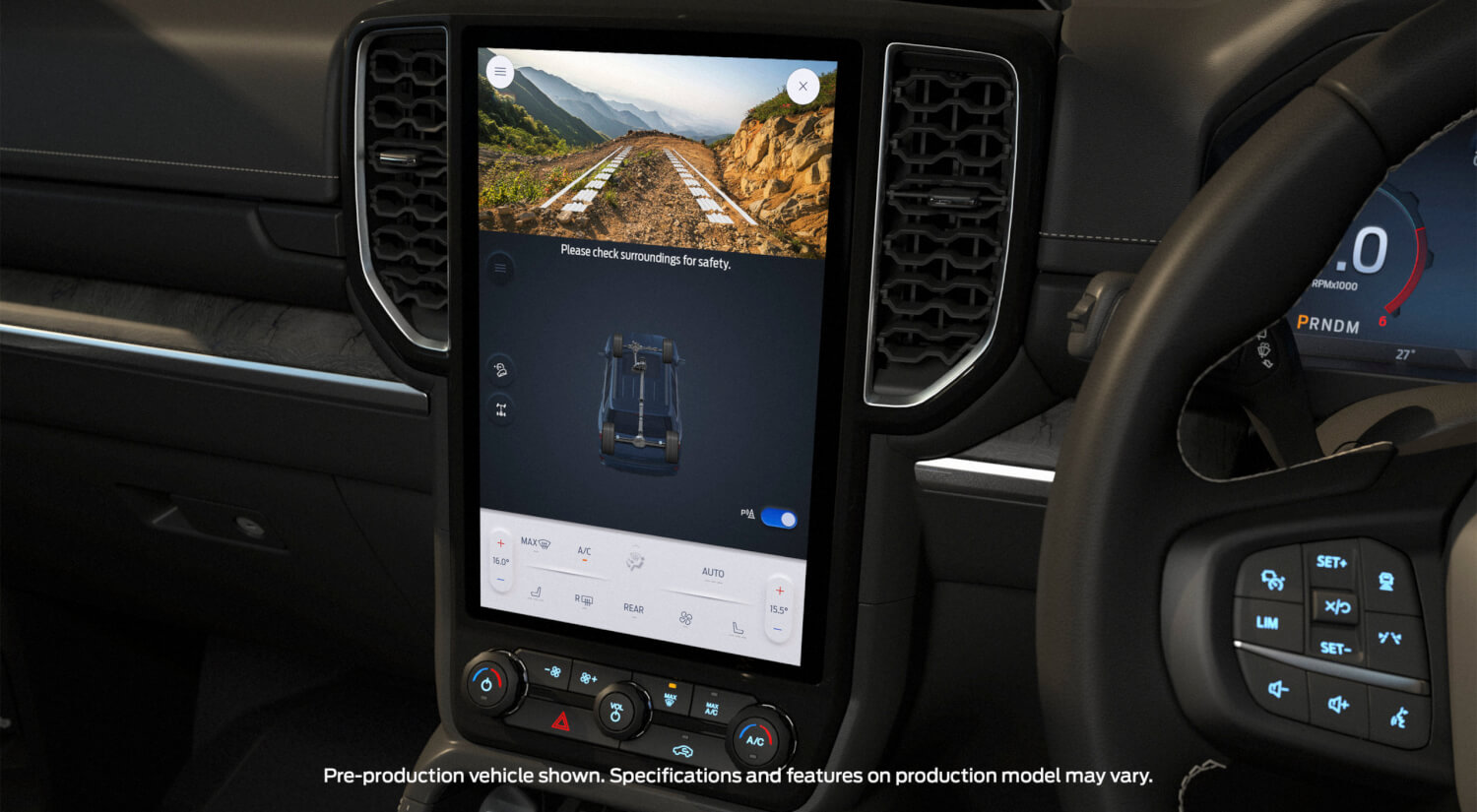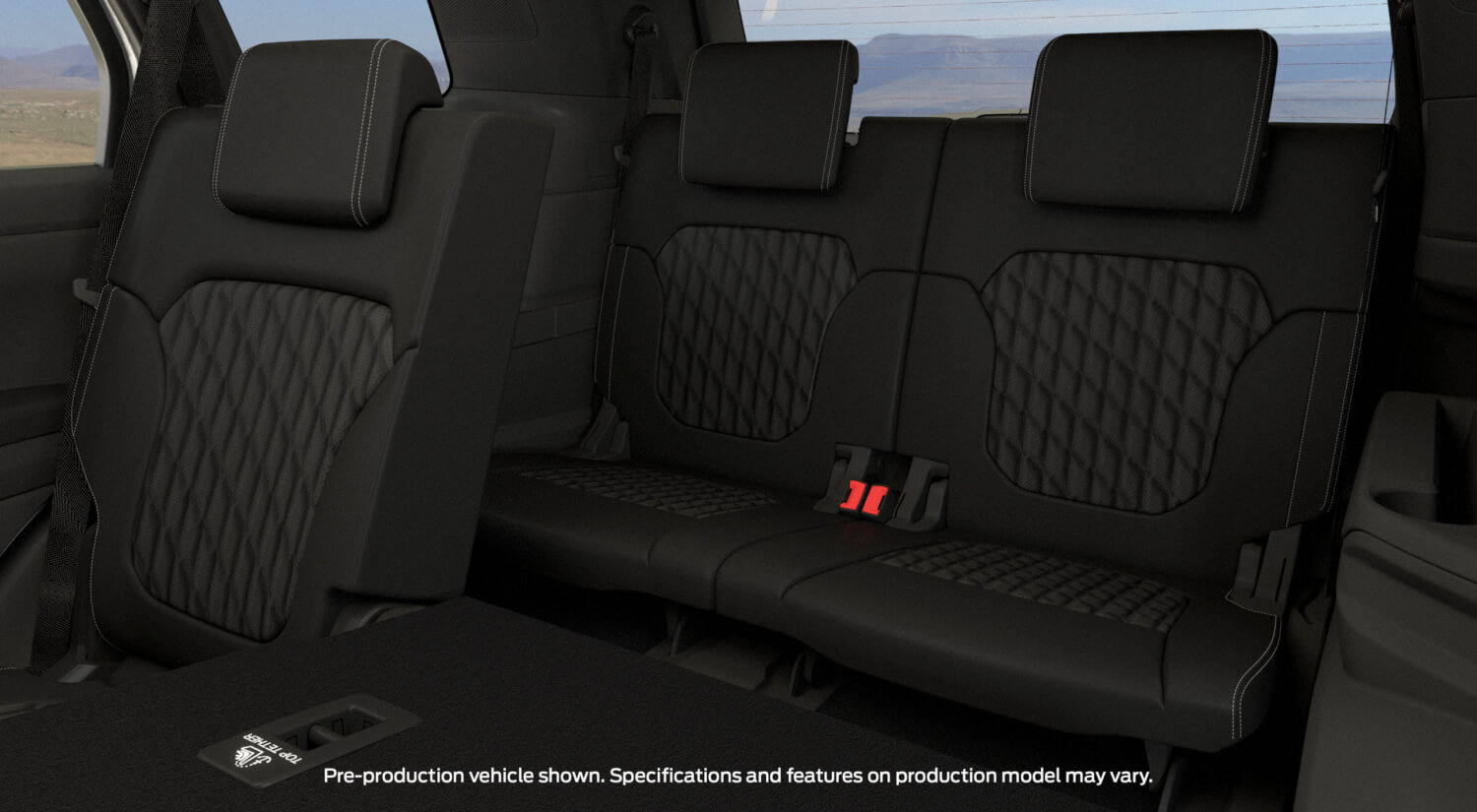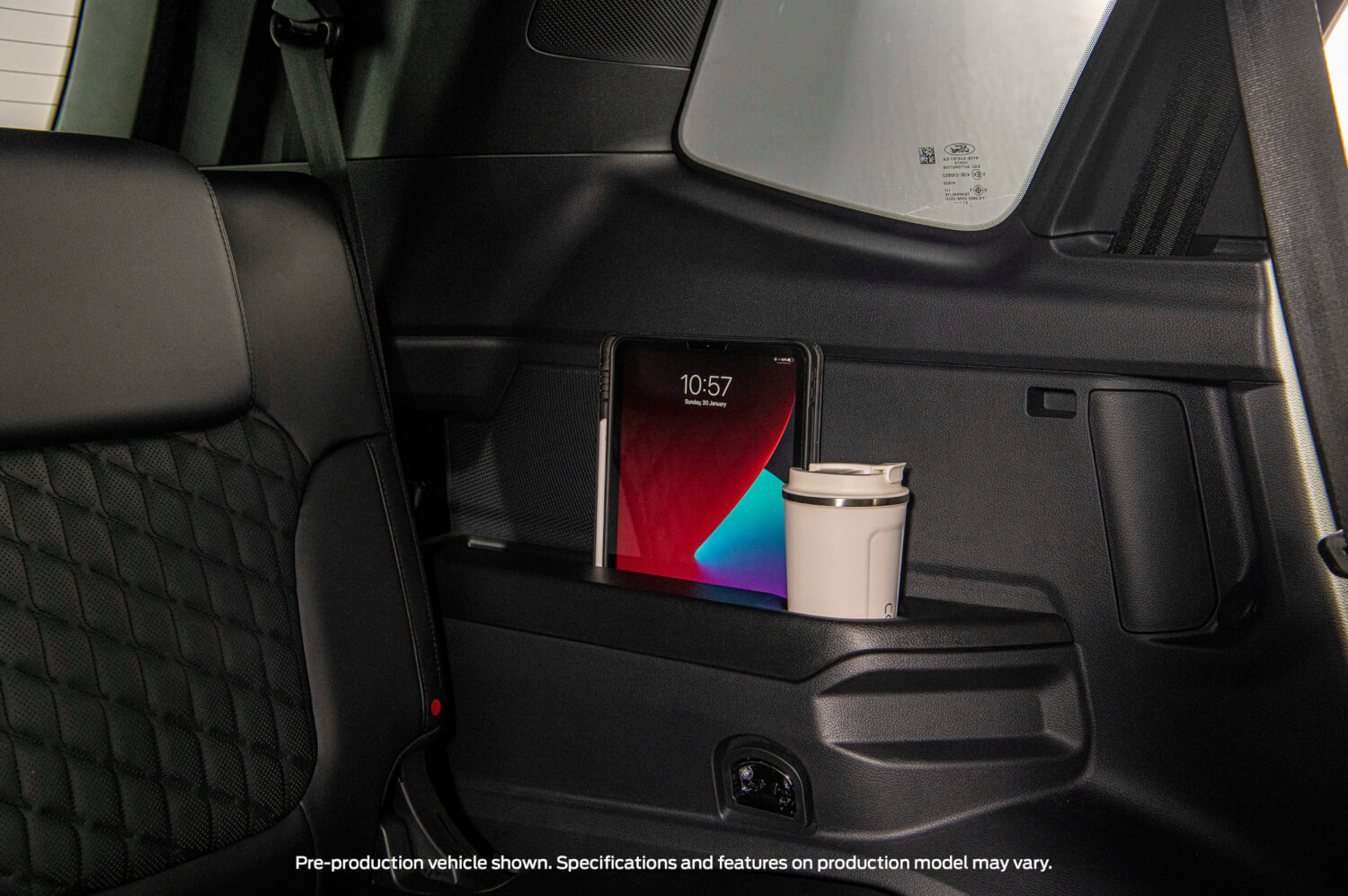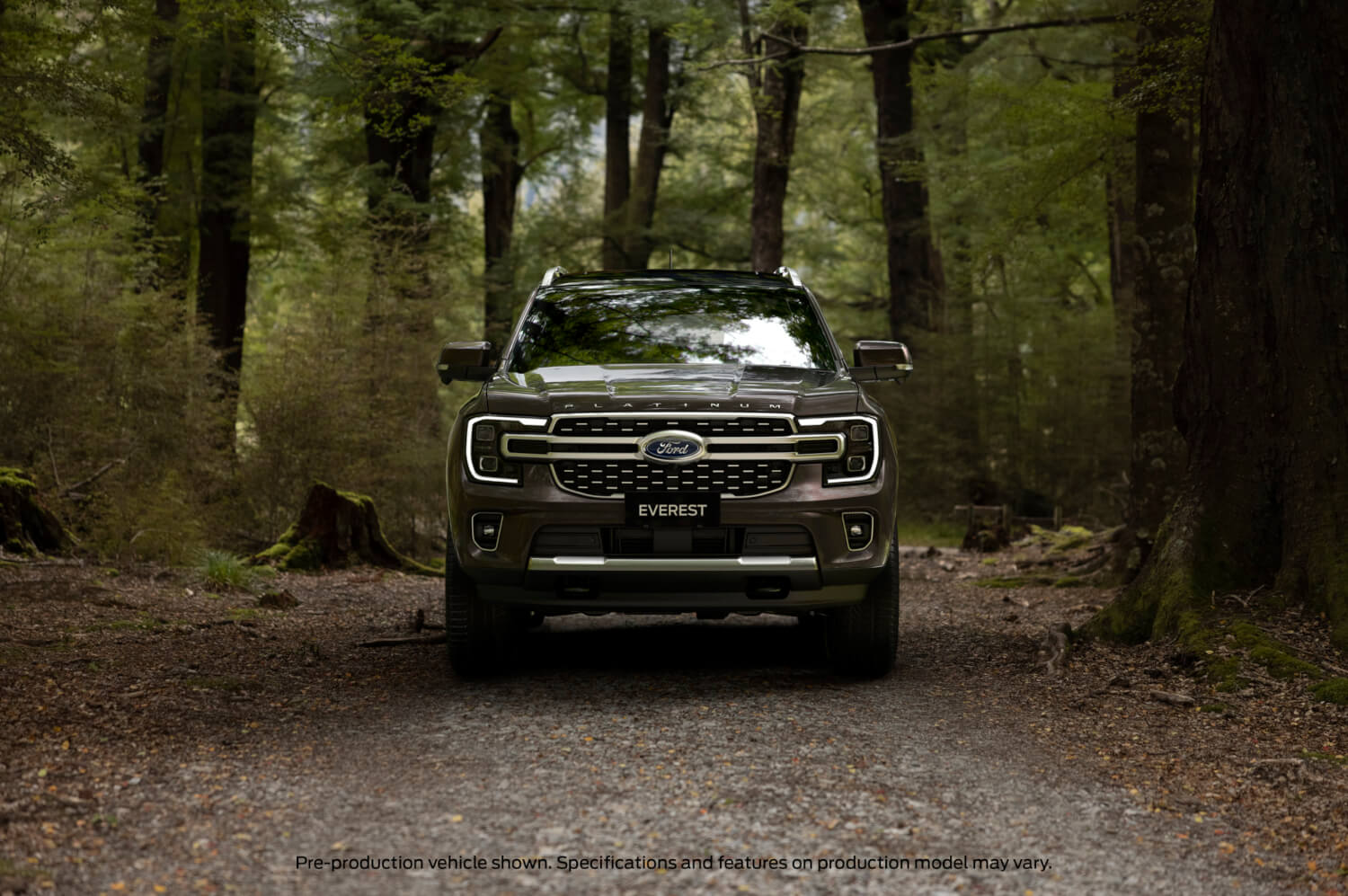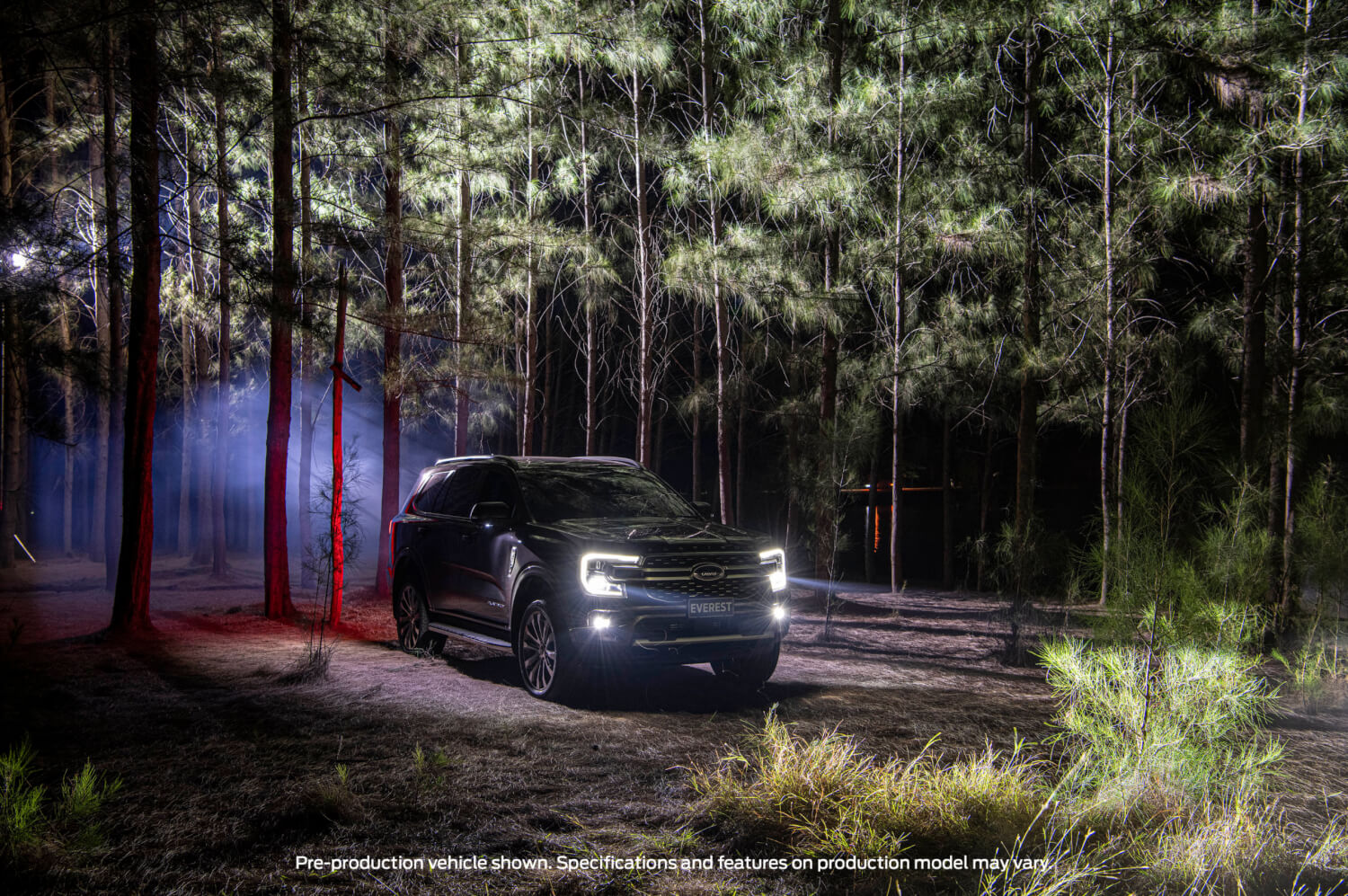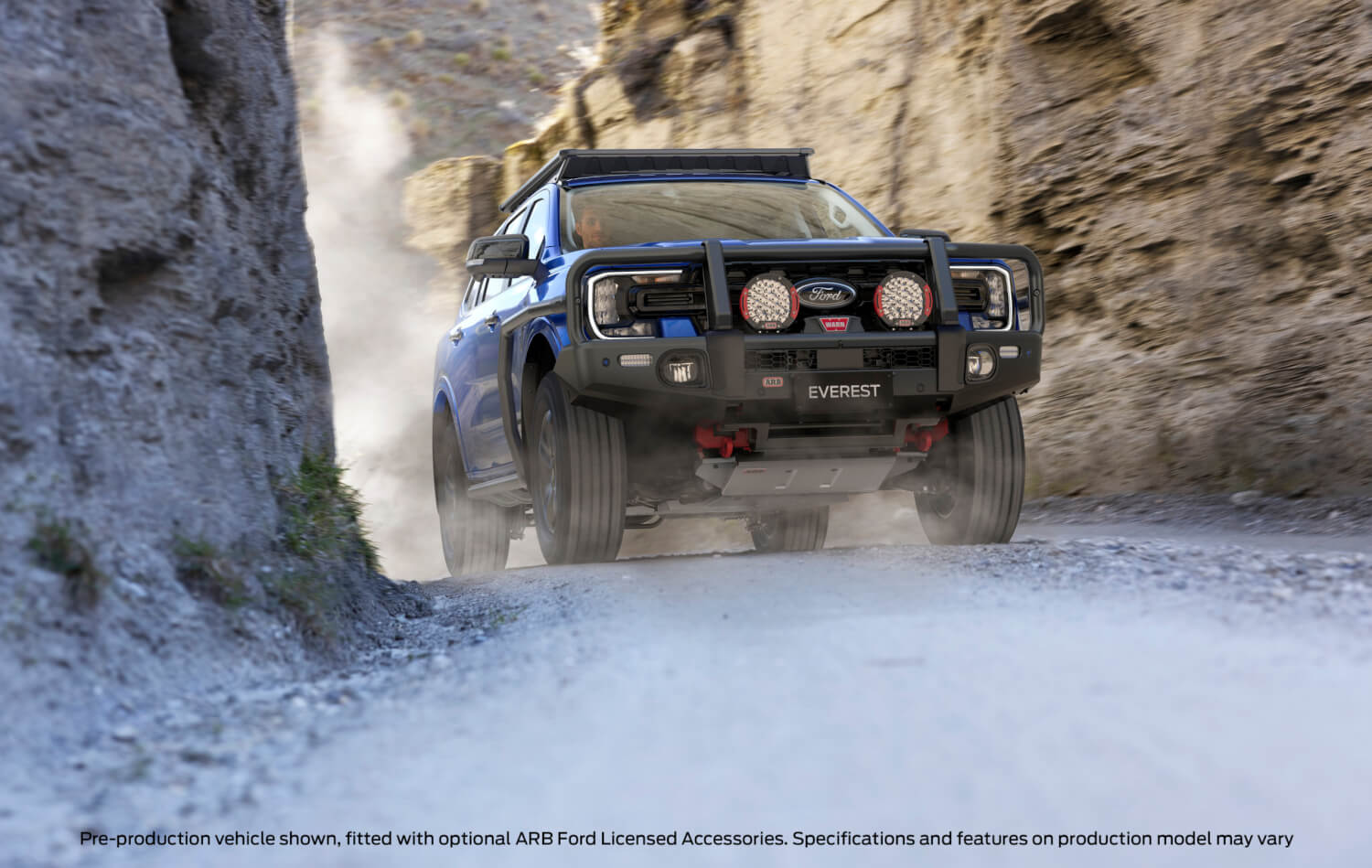Hot off the heels of last week’s Ranger-Raptor reveal, Ford has wasted little time in unveiling the next-gen Ford Everest.
Based on the Ranger platform, the Everest is Ford’s solution to the customer that finds themselves carrying kids more often than trays of timber.
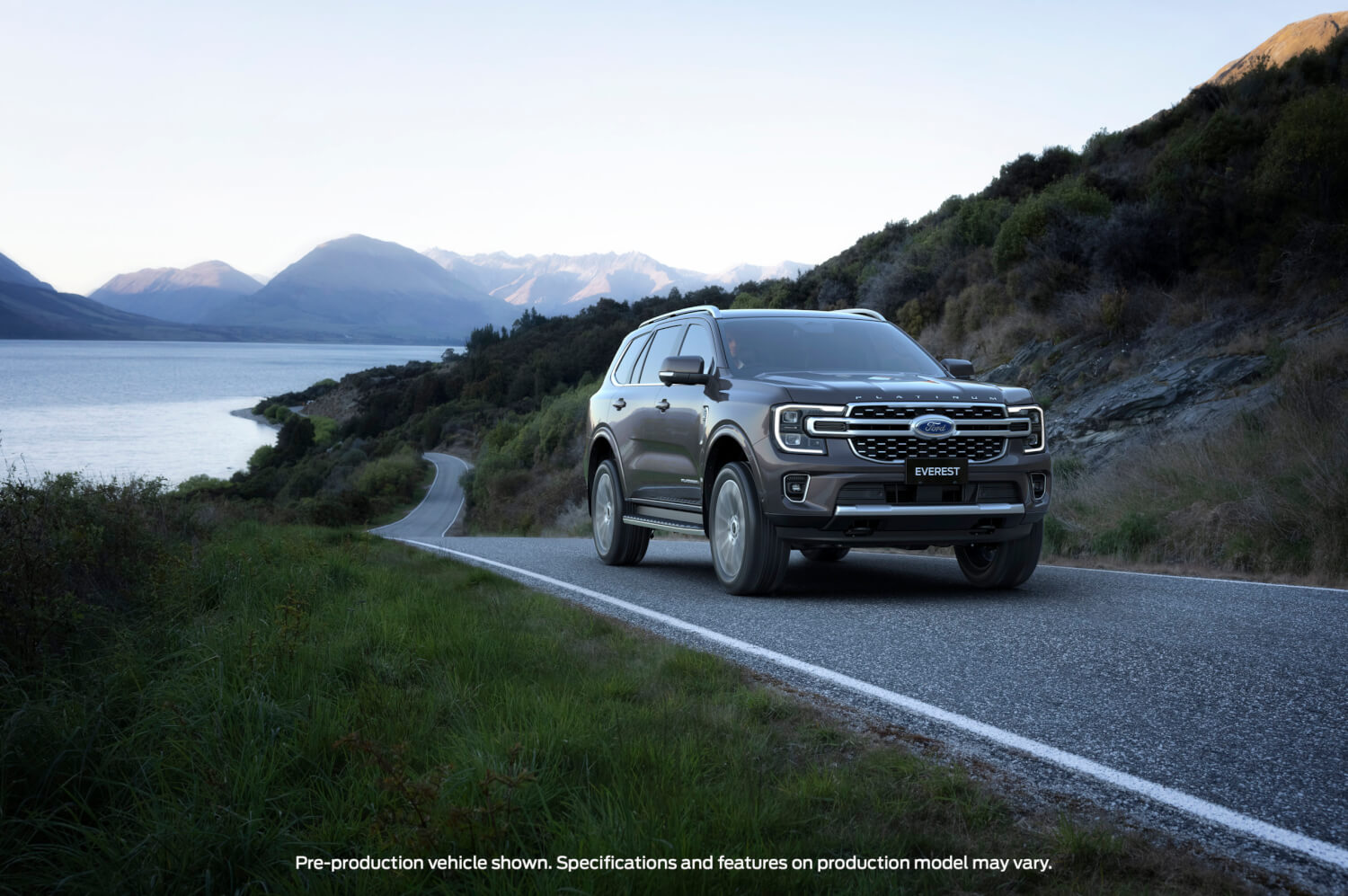
Because of this, it’s not hard to spot the similarities between the Ranger and the Everest, from the C-clamp head lamps to the strong horizontal upper grille bar, which is shared with Ford’s North American trucks. Like the all-new Ranger, the Everest has been designed with a wider track and longer wheelbase giving the new Everest a more muscular appearance.
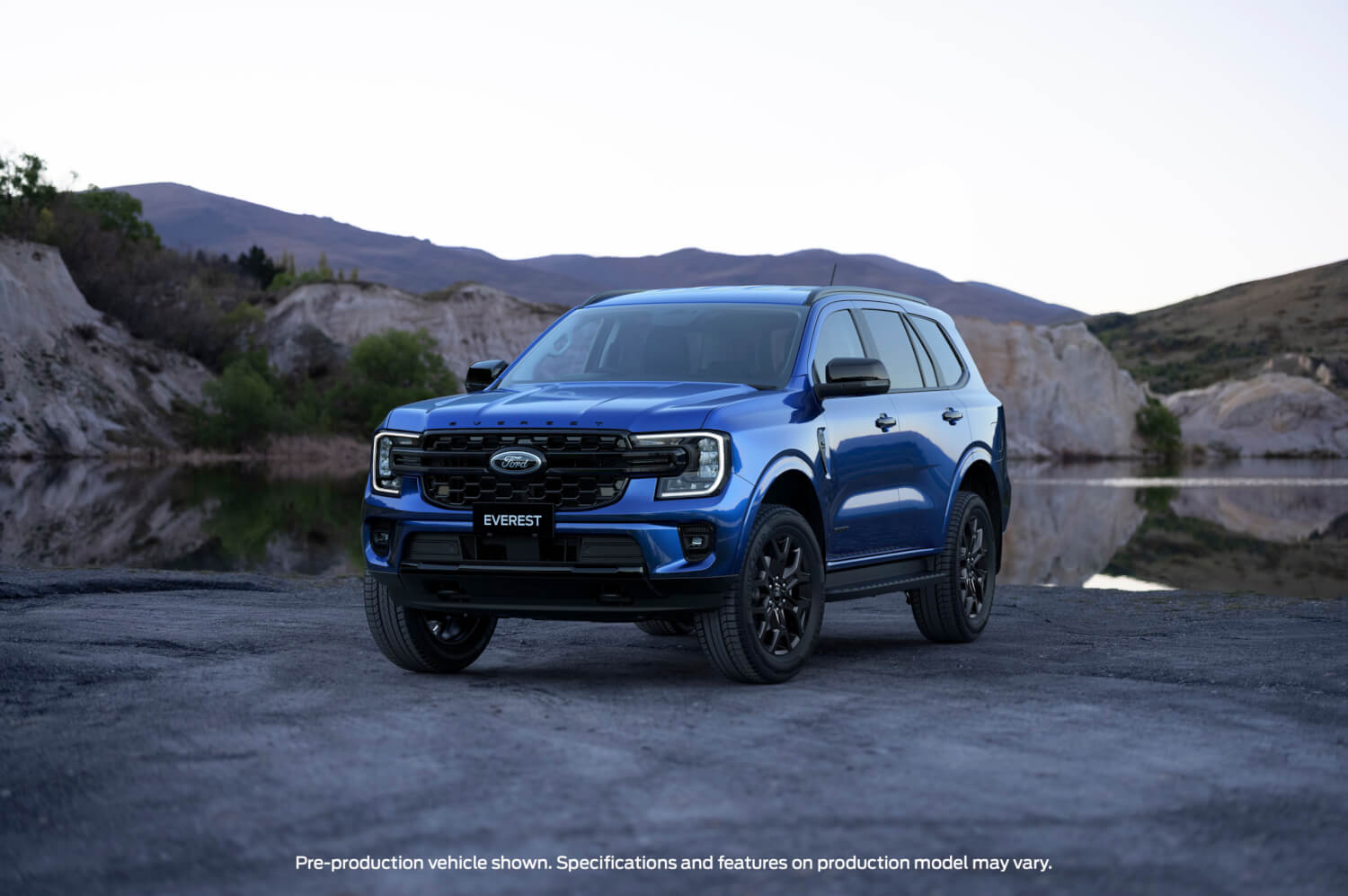
Muscle is certainly a talking point with the new Everest, namely in the choice of engine options. There are two engines available depending on the specification you select.
For the entry-level Trend is Ford’s proven 2.0-litre bi-turbo diesel engine, offered currently in the out-going Ranger and Everest models. The second is a new 3.0-Litre V6 turbo-diesel, offered for the mid-range Sport and top-of-the-line Platinum variants. Both engines are paired with Ford’s 10-speed automatic transmission.
Final specs of these engines will be confirmed closer to the New Zealand launch date. However, we already know the 2.0L is good for 157kW of power and 500Nm of torque in the current Everest. As for the 3.0L, we can only speculate.
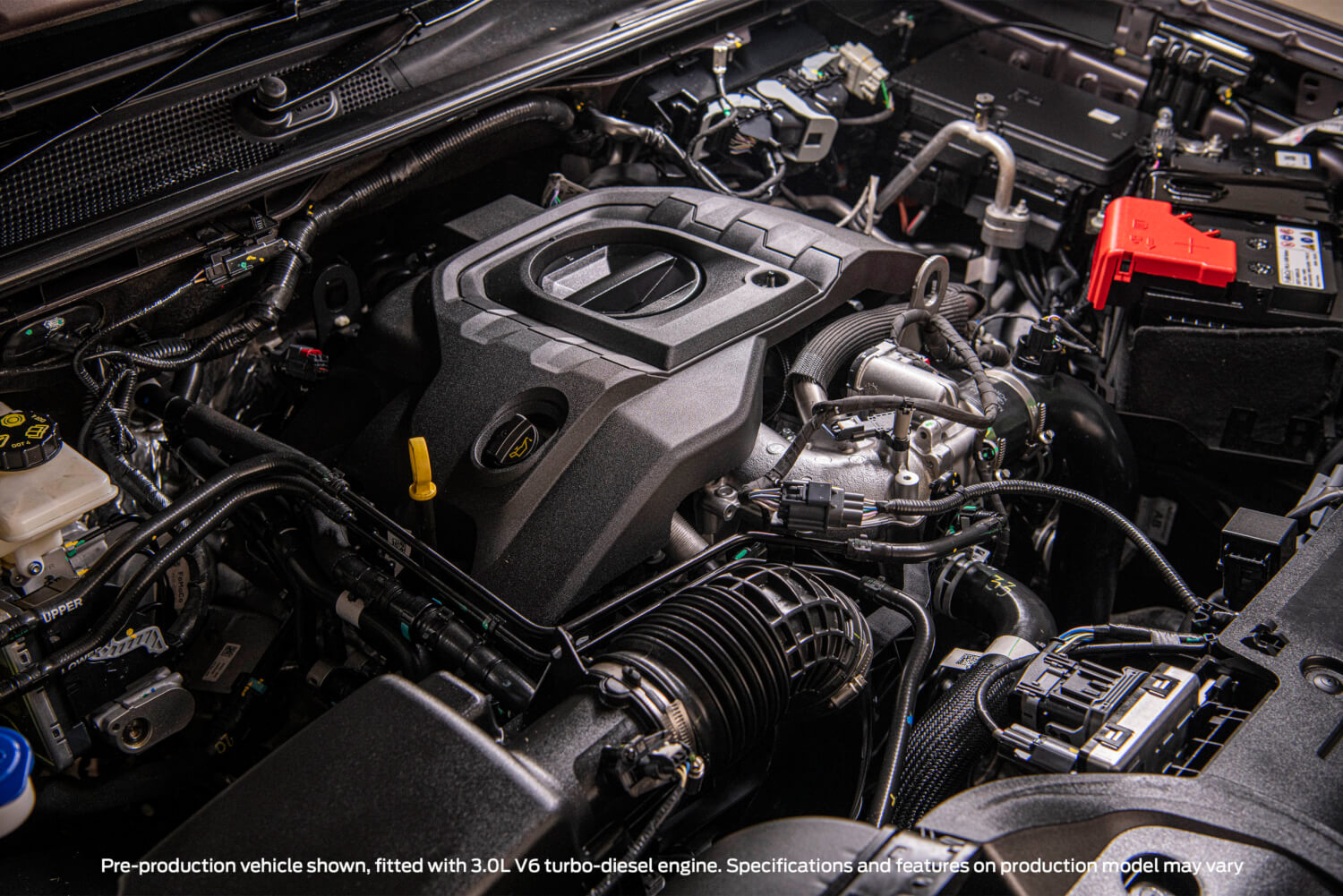
As we saw with the updated Ranger, Ford has spent plenty of time modernising the interior of the next-gen ute and SUVs. According to Ford, while their customers wanted the confidence to go off-road, “inside, they wanted a sanctuary”.
As a result, the new interior is awash with tech and comfortable materials. Sitting squarely up-front is a new high-resolution portrait 12-inch infotainment screen, running Ford’s latest Sync-4A software. The traditional analogue dash cluster is replaced with an 8 or 12.4-inch digital instrument panel, and all variants get wireless charging and an electric parking brake as standard. The new Everest is also supported with Ford’s FordPass App, which allows owners to access features like remote starting, vehicle status checks and zone lighting.
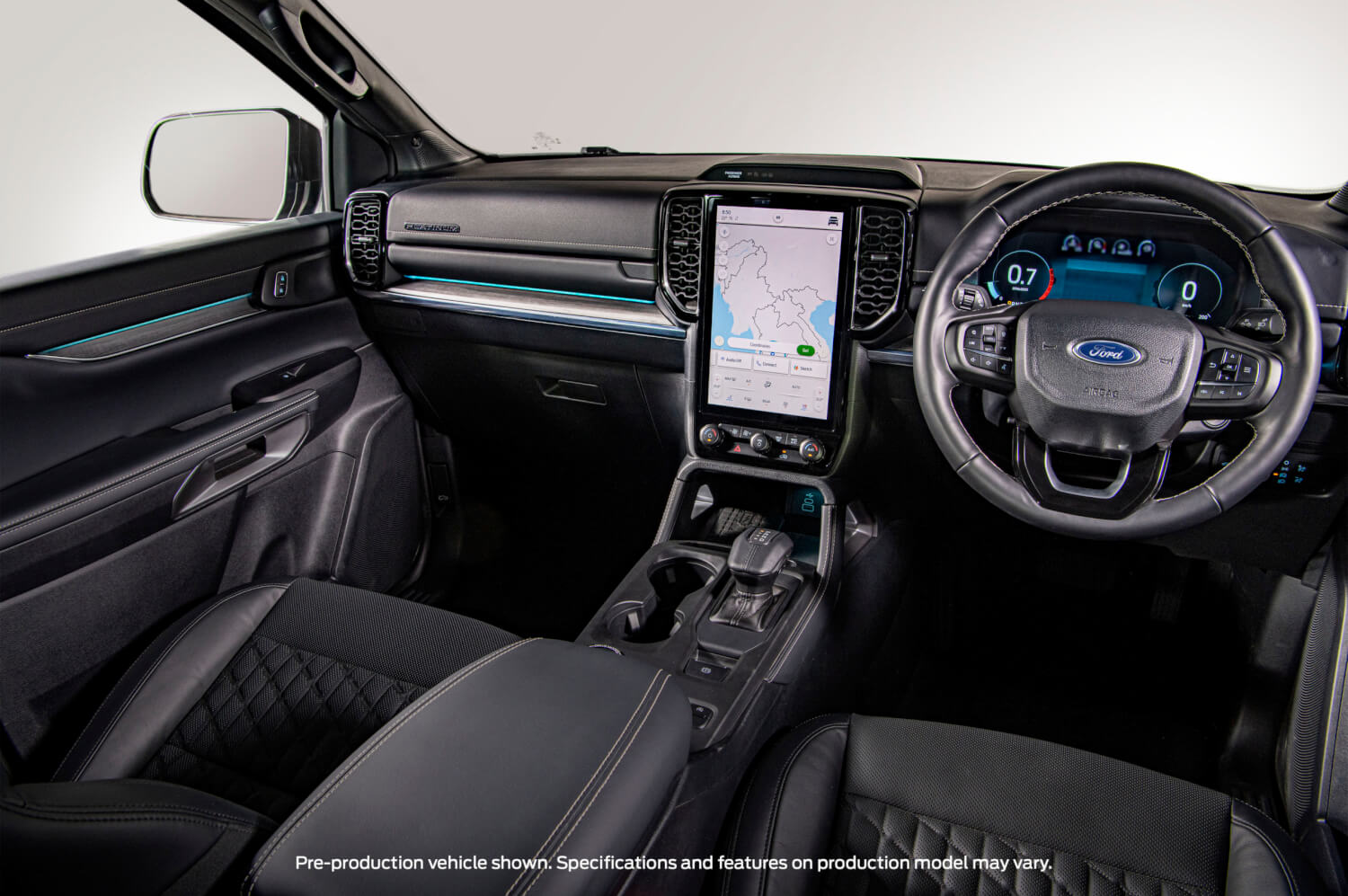
Move up the range to the top-spec Platinum model, you’ll find 10-way power-adjustable heated and ventilated front seats, and heated second-row seats. You’ll also find Matrix LED headlamps, quilted leather upholstery, a panoramic sunroof, and Ford’s Active Park Assist for automatic parallel parking, amongst other features.
Ford has also prioritised flexible seating; the second-row slides with a 60:40 split seatback. The third row is split 50:50, and Platinum models will allow you to fold the third row with a touch of a button.
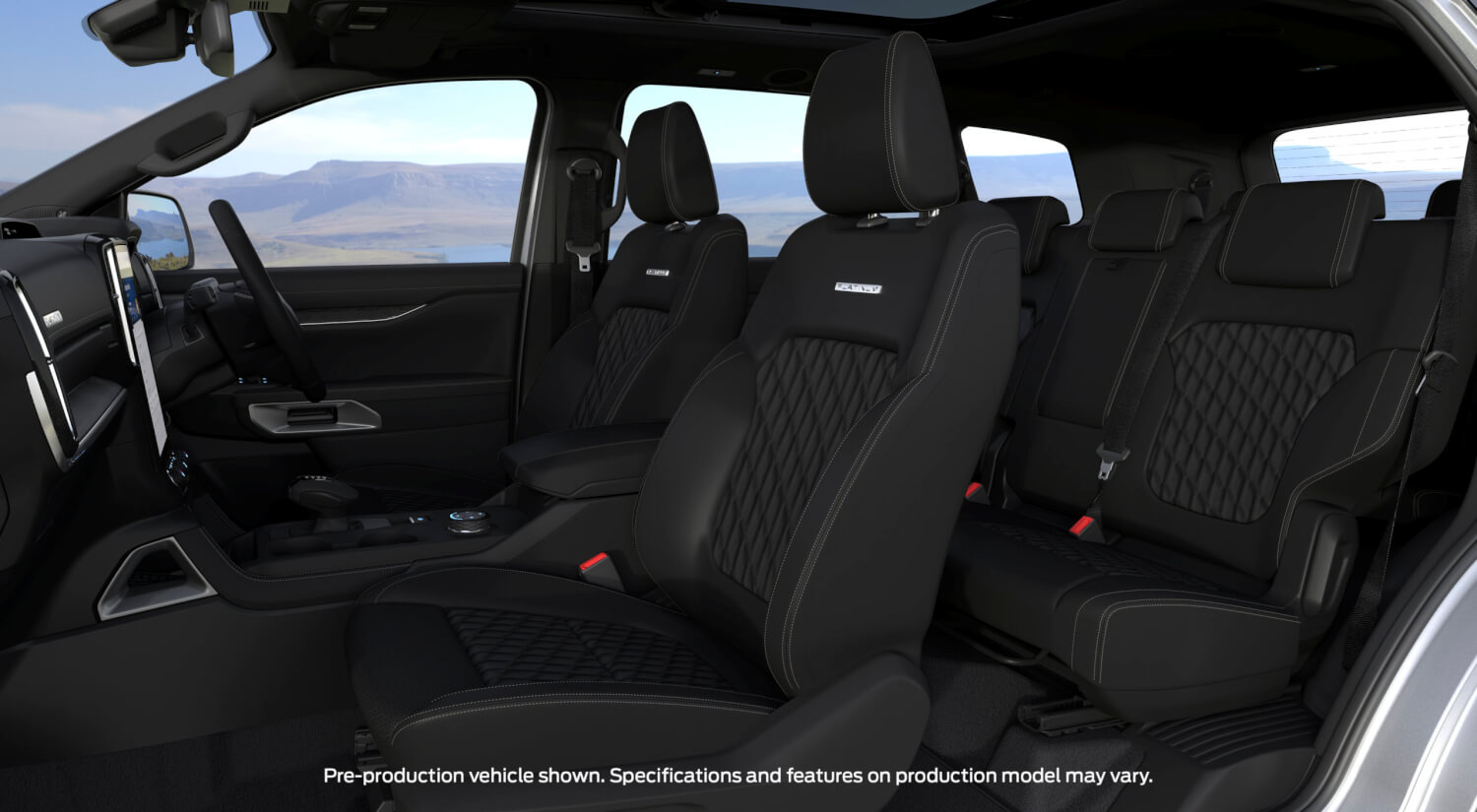
While all the toys are impressive, Ford says that this wasn’t the only focus. Ford claims that “one of the first things you’ll notice when you get into a new Everest is how quiet it is”. International markets design director, Max Wolff, said that “we’ve all been in vehicles with multiple rows of seats, where you have to twist your head around and almost shout to be heard by passengers in the second or third rows,” “That’s an issue we wanted to solve for Everest…”.
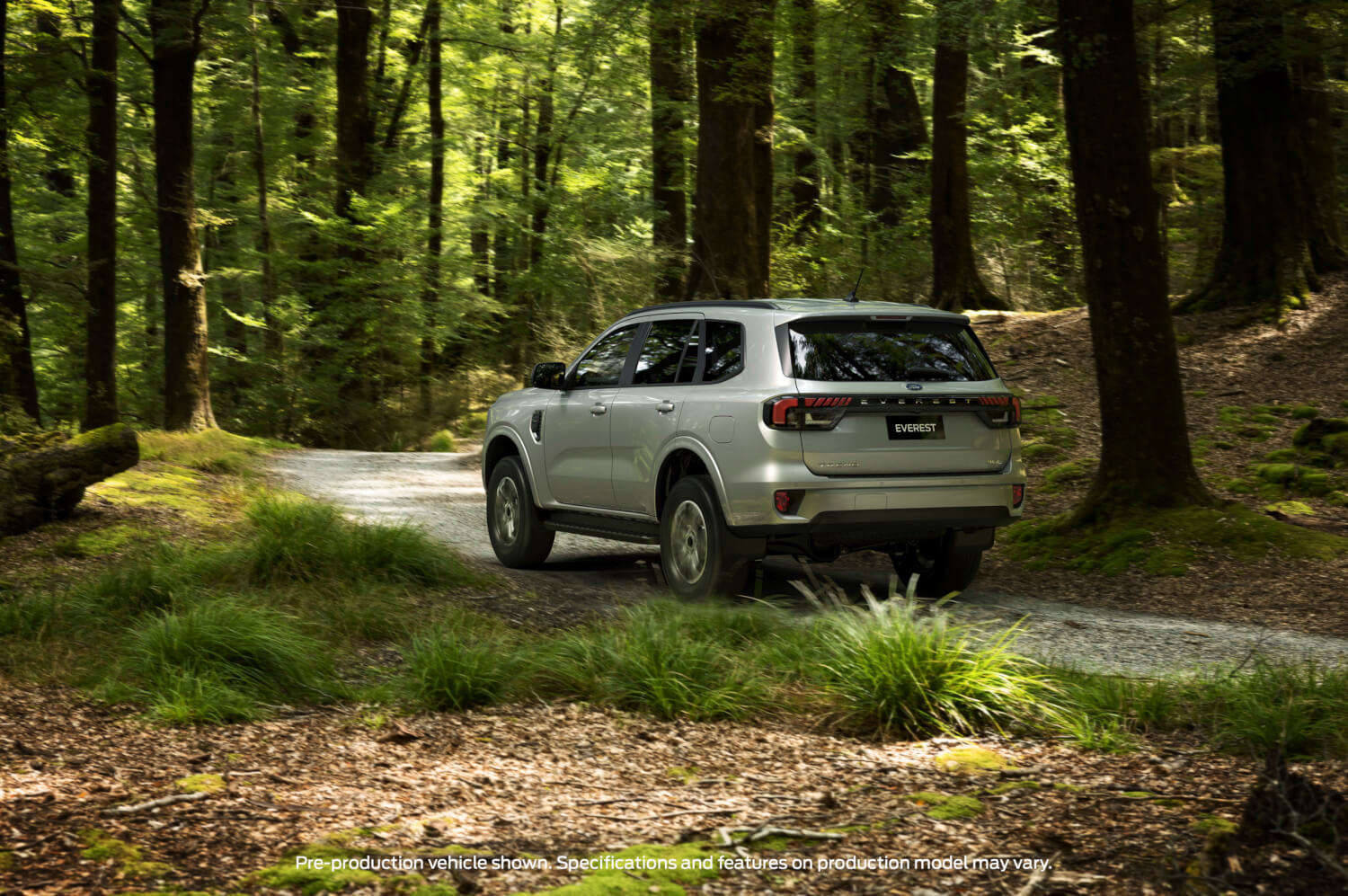
Yet don’t go thinking that the Everest has gone all soft either. The Everest is still expected to be a robust hauler and a solid off-roader. Backing these claims is a 3,500kg braked towing rating, a dedicated towing mode, and an integrated trailer brake controller. For the rough stuff, the Everest offers a rear locking differential, steel under-body protection and selectable off-road drive modes. The new Everest also has a dedicated off-road screen on the infotainment, displaying vehicle information and a front camera view of the terrain ahead.
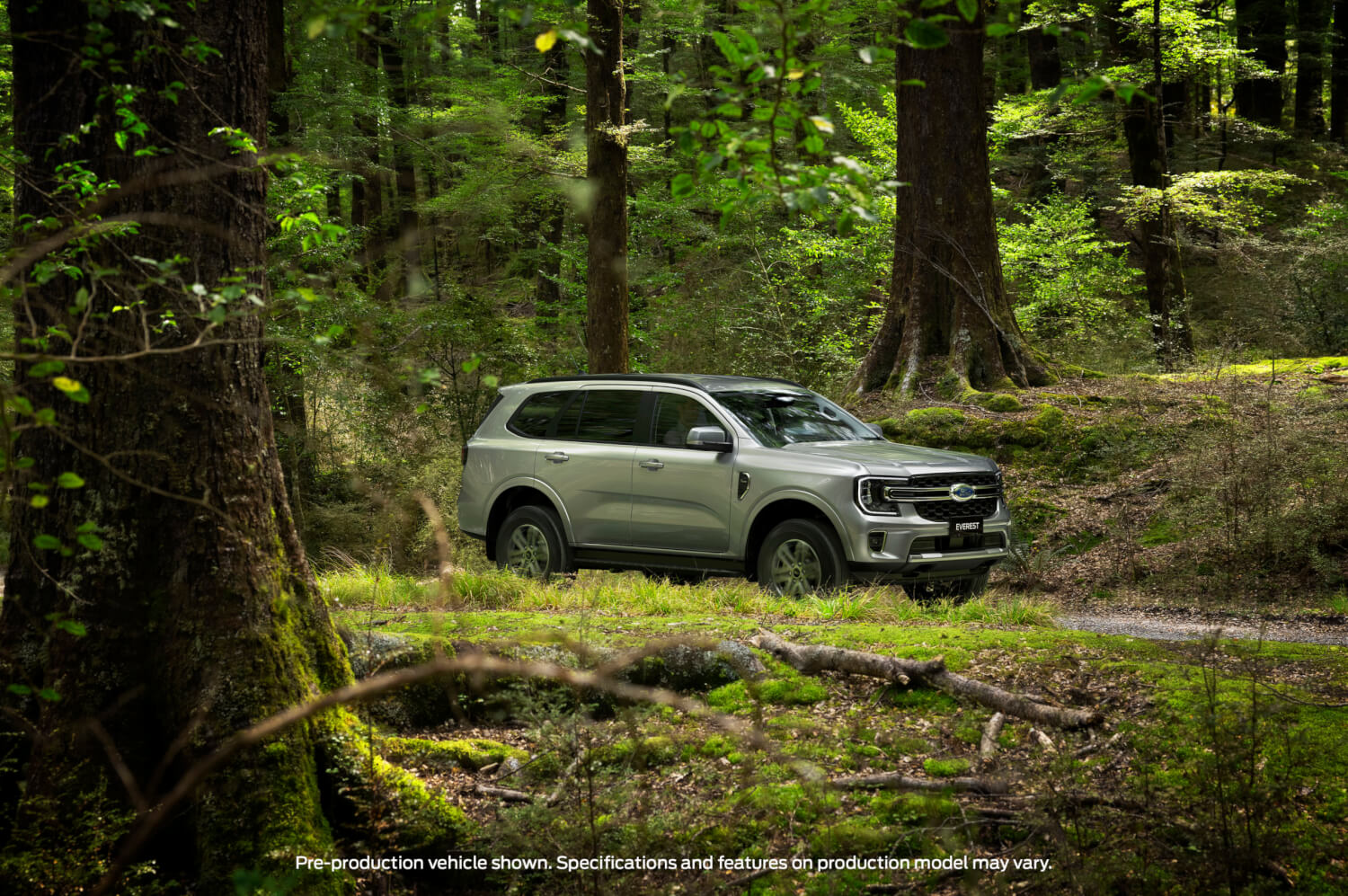
To keep the occupants safe, the new Everest now offers up to 9-airbags and has been bestowed with all of the latest safety software enhancements. These include a Lane-keeping system with road-edge detection, a blind spot information system with trailer coverage, Pre-collision assist with intersection functionality and Evasive steer assist.
The Everest is expected to land in New Zealand in the second half of 2022. Three models, being the Trend, Sport and Platinum will be available at launch. Pricing and full model specs are to be confirmed closer till then.
Ford, we’ll have one after the Raptor, please…


